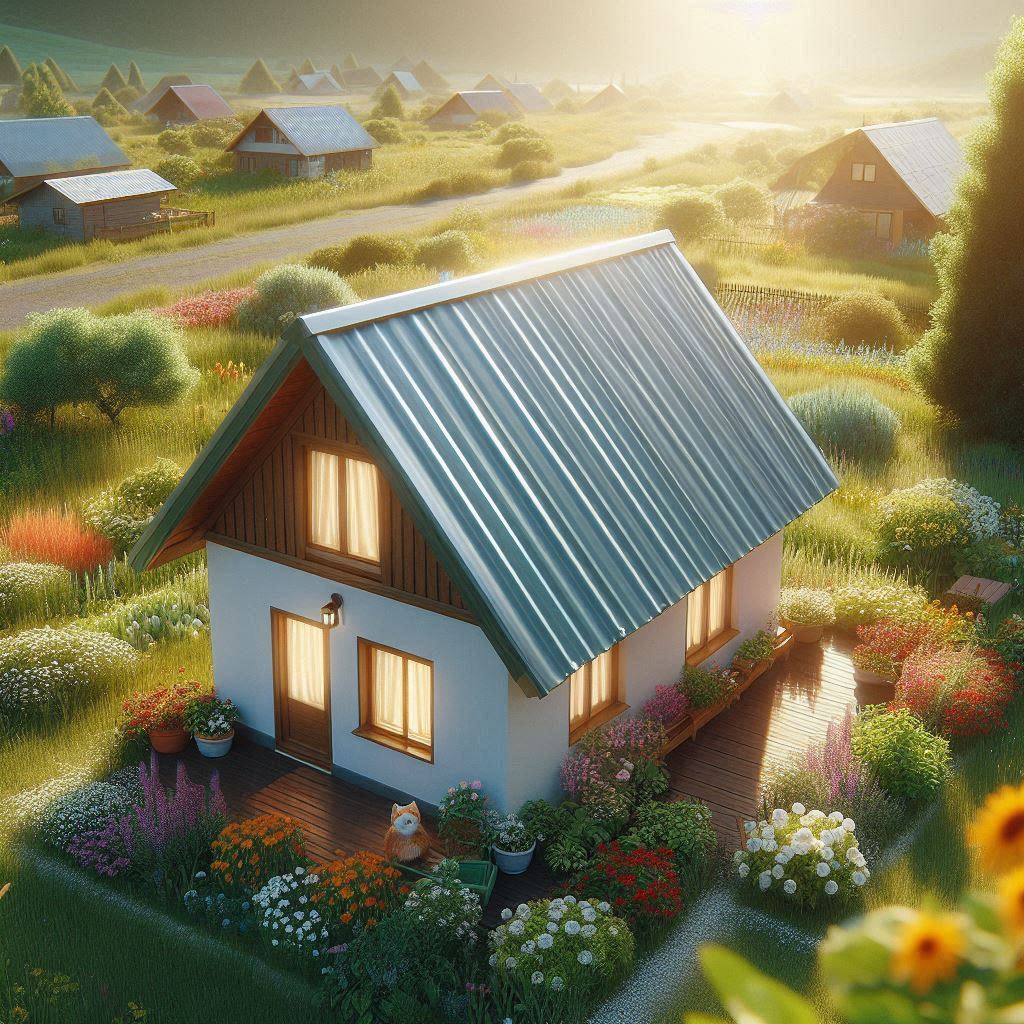1. The History and Evolution of Polyvinyl Chloride Sheet Roofing
1.1. Origins of PVC and its introduction to construction
PVC, or polyvinyl chloride, has been around since the 1920s, but it wasn’t until the 1960s that it made its way into the construction industry. I remember my grandfather telling me stories about how excited everyone was when PVC first appeared on the market. It was like a miracle material!
1.2. Advancements in Polyvinyl Chloride Sheet Roofing manufacturing techniques
Over the years, we’ve seen some amazing improvements in how PVC sheets are made. When I first started working in construction, the sheets were much thicker and less flexible. Now, they’re incredibly thin and easy to work with. It’s like night and day!
1.3. Modern applications and popularity in roofing
These days, PVC sheet roofing is everywhere. I see it on commercial buildings, homes, and even in my own neighborhood. It’s become so popular because it’s durable, affordable, and easy to install. I’ve even used it on my own shed!
2. Durability and Longevity of Polyvinyl Chloride Sheet Roofing
2.1. Resistance to weathering and UV radiation
One of the things I love about PVC roofing is how well it stands up to the elements. Sun, rain, snow – it handles it all like a champ. I’ve seen PVC roofs that look practically new after years of exposure to harsh weather.
2.2. Fire-retardant properties and safety benefits
Safety is always a top priority, and PVC roofing delivers in this area. It’s naturally fire-resistant, which gives me peace of mind. I always feel better recommending it to clients who are concerned about fire safety.
2.3. Expected lifespan compared to traditional roofing materials
When it comes to longevity, PVC roofing is hard to beat. While a traditional asphalt shingle roof might last 20 years, a well-maintained PVC roof can easily last 30 years or more. That’s a lot of extra time before you need to think about replacement!
3. Environmental Impact and Sustainability

3.1. Recyclability and end-of-life considerations
I’m always trying to be more eco-friendly, so I was pleased to learn that PVC roofing is recyclable. At the end of its life, it can be turned into new PVC products instead of ending up in a landfill.
3.2. Energy efficiency and insulation properties
PVC roofing can help keep your energy bills down. It reflects sunlight and helps insulate your home, which means less work for your air conditioning in summer and heating in winter. I noticed a difference in my own home after installing a PVC roof.
3.3. Comparison with other roofing materials in terms of eco-friendliness
While PVC isn’t perfect, it stacks up pretty well against other roofing materials in terms of environmental impact. It lasts longer than many alternatives, which means less frequent replacement and less waste over time.
4. Cost-Effectiveness and Economic Benefits
4.1. Initial installation costs vs. long-term savings
PVC roofing might cost a bit more upfront, but in my experience, it pays for itself over time. The long lifespan and low maintenance needs mean you’ll spend less in the long run.
4.2. Reduced maintenance and repair expenses
One of the things I appreciate most about PVC roofing is how little maintenance it needs. Unlike some other materials, you don’t need to worry about constant repairs or replacements.
4.3. Potential energy savings and impact on utility bills
The energy-efficient properties of PVC roofing can lead to noticeable savings on your energy bills. I’ve had clients tell me they’ve seen their cooling costs drop by as much as 20% after installing a PVC roof!
5. Versatility in Design and Application
5.1. Color options and aesthetic possibilities
Gone are the days when PVC roofing only came in boring, industrial colors. Now, you can find it in almost any color you can imagine. I once worked on a project where we used bright blue PVC roofing – it looked amazing!
5.2. Flexibility in shape and form for various architectural styles
PVC roofing is incredibly flexible, which makes it suitable for all sorts of architectural styles. Whether you’re working on a modern flat-roofed building or a traditional pitched roof, PVC can handle it.
5.3. Compatibility with different building types and climates
I’ve installed PVC roofing in hot, sunny climates and in areas with harsh winters. It performs well in both extremes, which is why it’s such a versatile choice for different building types and locations.
6. Installation Process and Techniques
6.1. Preparation and planning for Polyvinyl Chloride Sheet Roofing installation
Proper preparation is key to a successful PVC roof installation. I always make sure the roof deck is clean, dry, and structurally sound before we start laying the PVC sheets.
6.2. Tools and equipment required for proper installation
You don’t need a ton of specialized tools to install PVC roofing, which is another reason I like working with it. A heat welder is the most important piece of equipment – it’s used to create watertight seams between the sheets.
6.3. Common installation methods and best practices
There are a few different ways to install PVC roofing, including mechanically attached, fully adhered, and ballasted systems. The best method depends on the specific building and climate. I always make sure to follow manufacturer guidelines for the best results.
7. Maintenance and Care for Polyvinyl Chloride Sheet Roofing

7.1. Routine inspection and cleaning procedures
PVC roofing is low-maintenance, but it’s still a good idea to inspect it regularly. I recommend a visual check at least twice a year, and a good cleaning to remove any debris or dirt buildup.
7.2. Addressing minor repairs and damage
If you do spot any damage, it’s usually pretty easy to fix. Small punctures or tears can often be repaired with a patch of PVC material and a heat welder. I’ve done these repairs many times, and they’re typically quick and effective.
7.3. Professional maintenance services and recommendations
While many maintenance tasks can be DIY, I always suggest calling in a professional for more significant issues or if you’re not comfortable working on your roof. It’s better to be safe than sorry!
8. Performance in Extreme Weather Conditions
8.1. Resistance to high winds and hurricanes
PVC roofing has impressive wind resistance. I’ve seen PVC roofs stay intact in areas hit by hurricanes, where other roofing materials were blown away.
8.2. Behavior in extreme temperatures (hot and cold)
Whether it’s scorching hot or freezing cold, PVC roofing maintains its integrity. It doesn’t become brittle in the cold or soft in the heat, which is why it’s such a reliable choice in diverse climates.
8.3. Water-resistance and leak prevention capabilities
One of the best features of PVC roofing is its excellent water resistance. The heat-welded seams create a watertight barrier that effectively prevents leaks. I’ve installed PVC roofs in areas with heavy rainfall, and they perform beautifully.
9. Innovations and Future Trends in Polyvinyl Chloride Sheet Roofing
9.1. Emerging technologies in Polyvinyl Chloride Sheet Roofing manufacturing
The PVC roofing industry is always innovating. I’m excited about new technologies that are making PVC sheets even more durable and environmentally friendly.
9.2. Integration with smart home and energy management systems
There’s a growing trend towards integrating roofing systems with smart home technology. Imagine being able to monitor your roof’s performance from your smartphone – it’s not science fiction, it’s becoming a reality!
9.3. Potential advancements in durability and sustainability
I’m particularly interested in the ongoing research into making PVC roofing even more sustainable. There’s work being done on improving its recyclability and reducing its carbon footprint even further.
10. Regulatory Compliance and Industry Standards
10.1. Building codes and regulations for Polyvinyl Chloride Sheet Roofing
It’s crucial to stay up-to-date with building codes and regulations. PVC roofing generally meets or exceeds most building code requirements, but it’s always worth double-checking for your specific area.
10.2. Industry certifications and quality assurance measures
Look for PVC roofing products that have been certified by reputable industry organizations. These certifications are a good indicator of quality and performance.
10.3. Safety considerations and fire resistance ratings
PVC roofing typically has excellent fire resistance ratings, which is a big plus for safety. Always check the specific fire rating of the product you’re using to ensure it meets local requirements.
Summary of Polyvinyl Chloride Sheet Roofing
Polyvinyl Chloride Sheet Roofing has come a long way since its introduction to the construction industry. It offers impressive durability, cost-effectiveness, and versatility, making it a popular choice for a wide range of building types. While it has some environmental considerations, its long lifespan and recyclability make it a relatively sustainable option. As technology continues to advance, we can expect to see even more improvements in PVC roofing’s performance and eco-friendliness.
Frequently Asked Questions
What is the average lifespan of Polyvinyl Chloride Sheet Roofing?
A well-installed and maintained PVC roof can last 30 years or more. I’ve seen some that are still going strong after 35 years!
How does Polyvinyl Chloride Sheet Roofing compare to other roofing materials in terms of cost?
PVC roofing might have a higher upfront cost than some materials like asphalt shingles, but its long lifespan and low maintenance needs often make it more cost-effective in the long run.
Is Polyvinyl Chloride Sheet Roofing environmentally friendly?
While PVC production does have some environmental impacts, the material’s long lifespan, energy efficiency, and recyclability make it a relatively eco-friendly choice compared to many other roofing materials.
Can Polyvinyl Chloride Sheet Roofing be installed over existing roofing materials?
In some cases, yes. However, it’s usually best to remove the old roofing material first to ensure a proper installation. I always recommend a professional assessment to determine the best approach.
What maintenance is required for Polyvinyl Chloride Sheet Roofing?
PVC roofing is low-maintenance, but it’s good to inspect it twice a year and clean off any debris. Any damage should be repaired promptly to prevent more significant issues.
Why 9 Out of 10 Experts Recommend Polyvinyl Chloride Fabric for Durability
Why 9 Out of 10 Experts Recommend Polyvinyl Chloride Fabric for Durability






